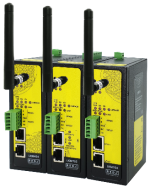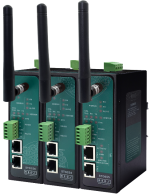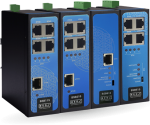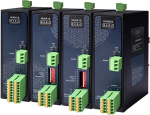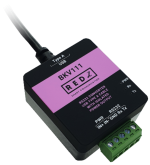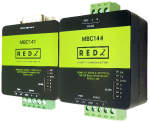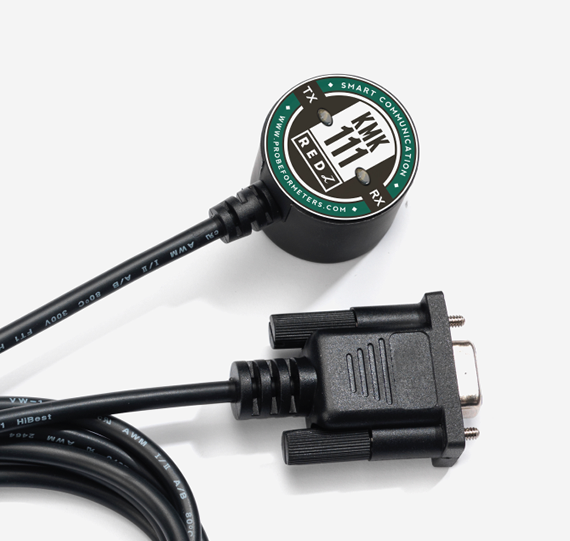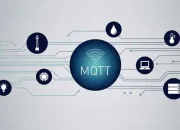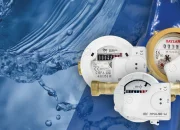1.Introduction
1.1 Overview of Broadband Powerline Technology
Broadband Powerline Technology (BPL), also known as Powerline Communication (PLC), represents a revolutionary approach to data transmission, leveraging the existing electrical power infrastructure to deliver broadband internet connectivity. This innovative technology utilizes the electrical power grid, transforming it into a network capable of carrying both power and data signals. By superimposing high-frequency data signals onto the low-frequency electrical current, BPL can deliver internet access to homes and businesses without the need for additional wiring, making it a cost-effective and efficient solution for extending broadband access, especially in underserved or rural areas.
1.2 Importance in Modern Communication Infrastructure
In today's digital age, reliable and high-speed internet access is essential for economic development, education, healthcare, and overall quality of life. While urban areas often benefit from multiple broadband options, rural and remote regions frequently suffer from limited connectivity. BPL technology addresses this digital divide by utilizing the ubiquitous power grid to extend internet reach where traditional broadband infrastructure, like fiber optics or DSL, is not economically feasible. Additionally, BPL can enhance smart grid initiatives, enabling advanced energy management, real-time monitoring, and improved efficiency of electrical utilities. This dual-purpose functionality underscores BPL's significance in both communication and energy sectors.
2.Historical Background
2.1 Evolution of Powerline Communication
1990s: Early trials of BPL technology demonstrated its potential for high-speed data transmission. These initial tests highlighted both the promise and the technical challenges of BPL, such as interference and signal attenuation.
2000s: The early 2000s saw significant investment in BPL technology. Several pilot projects were launched around the world to test the feasibility of delivering broadband internet over power lines. Companies and utilities worked together to refine the technology and address technical hurdles.
2010s: By this time, BPL technology had matured significantly. Improved modulation techniques, better error correction, and advanced filtering methods helped overcome many of the earlier challenges. Commercial deployments began to appear, particularly in areas where traditional broadband infrastructure was lacking.
Present Day: Today, BPL is a viable option for providing broadband internet, particularly in rural and remote areas. It is also used in smart grid applications, enabling better management and monitoring of electrical networks.
2.2 Key Developments in Broadband Powerline Technology
Broadband Powerline Technology (BPL) has undergone significant advancements over the years, transforming from a niche concept to a practical solution for extending internet connectivity through existing electrical infrastructure. This part explores some of the key developments that have shaped the evolution of BPL.
Digital Signal Processing (DSP) and Advanced Modulation Techniques:
One of the critical breakthroughs in BPL technology has been the development of digital signal processing (DSP) algorithms and advanced modulation techniques. These innovations have enabled more efficient use of the available frequency spectrum, allowing for higher data rates and improved reliability over power lines. By optimizing signal transmission and reducing interference, DSP has played a pivotal role in enhancing the performance of BPL systems.
Improved Error Correction and Signal Filtering:
Error correction and signal filtering mechanisms have become essential components of modern BPL systems. Advanced error correction algorithms help mitigate the effects of noise and interference, ensuring the integrity of data transmission over noisy power lines. Additionally, sophisticated filtering techniques help isolate BPL signals from electrical noise generated by appliances and other devices, further enhancing signal quality and reliability.
Broadband over Powerline (BPL) Standards:
The establishment of standards for BPL technology has been instrumental in fostering interoperability and driving market growth. Organizations such as the IEEE and the ITU have developed standards to define the technical specifications and requirements for BPL systems. These standards ensure compatibility between different BPL implementations and provide guidelines for regulatory compliance, fostering confidence among stakeholders and encouraging investment in BPL infrastructure.
Integration with Smart Grid Technologies:
BPL technology has found synergies with smart grid initiatives aimed at modernizing the electrical grid and improving energy efficiency. By leveraging BPL for communication purposes, utilities can monitor and control grid operations in real time, optimize energy distribution, and facilitate demand response programs. The integration of BPL with smart grid technologies has unlocked new opportunities for enhancing grid reliability and resilience while enabling more sustainable energy management practices.
Commercial Deployments and Market Growth:
In recent years, BPL technology has transitioned from research and development efforts to commercial deployments in various parts of the world. Utilities, telecom operators, and technology vendors have launched BPL-based services to provide broadband internet access in both urban and rural areas. These deployments have demonstrated the viability of BPL as a cost-effective solution for extending internet connectivity, particularly in regions where traditional broadband infrastructure is lacking.
Continued Research and Innovation:
Despite significant advancements, research and innovation in BPL technology continue to drive progress and unlock new possibilities. Ongoing efforts focus on improving spectral efficiency, enhancing interoperability, and developing advanced applications for BPL, such as home automation and electric vehicle charging. Additionally, research initiatives explore novel use cases for BPL in emerging areas such as smart cities and Internet of Things (IoT) applications.
In conclusion, key developments in Broadband Powerline Technology have propelled its evolution from a concept to a practical solution for delivering broadband internet access over existing electrical infrastructure. Through advancements in digital signal processing, error correction, standards development, and integration with smart grid technologies, BPL has become an integral part of the modern communication and energy landscape, offering new opportunities for connectivity, efficiency, and sustainability. As research and innovation continue to drive progress, the future of BPL holds promise for further advancements and widespread adoption.
3.Basic Principles of Powerline Communication:
At its core, powerline communication (PLC) relies on the same fundamental principles as traditional wired communication methods. Electrical signals, which carry power from the utility grid to homes and businesses, can also be used to transmit data. PLC systems superimpose data signals onto the electrical waveform, allowing for simultaneous transmission of power and data over the same wires.
3.1 Frequency Spectrum and Signal Modulation:
BPL systems operate within a specific frequency spectrum allocated for communication purposes. Typically, BPL systems utilize frequencies ranging from several kilohertz to several megahertz, depending on regulatory guidelines and system requirements. Different frequency bands offer varying trade-offs between data rate, range, and interference susceptibility.
Signal modulation techniques play a crucial role in encoding data onto the powerline. Common modulation schemes used in BPL include:
• Orthogonal Frequency Division Multiplexing (OFDM): OFDM divides the available frequency spectrum into multiple orthogonal subcarriers, each carrying a portion of the data. This technique enables robust communication in the presence of frequency-selective fading and noise.
• Spread Spectrum Modulation: Spread spectrum techniques spread the signal energy across a wider frequency band, reducing the impact of narrowband interference and improving signal robustness.
• Phase Shift Keying (PSK) and Quadrature Amplitude Modulation (QAM): PSK and QAM schemes modulate the phase or amplitude of the carrier signal to represent digital data symbols. These modulation techniques offer high spectral efficiency and are commonly used in BPL systems.
3.2 BPL Architecture and Components:
A typical BPL system consists of several key components:
• Access Points (APs) or Modems: These devices interface with the electrical power lines and modulate/demodulate the data signals for transmission/reception. BPL modems may be installed at substations, transformer cabinets, or directly within homes and businesses.
• Powerline Communication Controllers (PLCCs): PLCCs coordinate communication between different BPL devices and manage the data transmission process. They handle tasks such as error correction, signal processing, and network synchronization.
• Coupling Devices: Coupling devices, such as couplers or transformers, are used to interface BPL modems with the powerline network. They ensure efficient coupling of data signals onto the powerline and isolation from electrical noise.
• Networking Equipment: BPL networks may include additional networking equipment, such as routers, switches, and access points, to extend connectivity and provide additional services, such as Wi-Fi access.
4. Applications of Broadband Powerline Technology
“Broadband Powerline Technology enables utilities to collect data on voltage levels, phase angles, harmonics, and temperature while providing connectivity for other applications.”
(BPL) finds diverse applications across residential, commercial, and industrial sectors. In residential settings, BPL enables seamless internet connectivity by utilizing existing electrical wiring, eliminating the need for additional infrastructure. It provides a cost-effective solution for extending broadband access to homes, particularly in rural and underserved areas where traditional broadband options may be limited. Moreover, BPL supports smart home applications, such as home automation and energy management, enhancing convenience and efficiency for homeowners. In commercial and industrial environments, BPL facilitates reliable communication for various applications, including building automation, remote monitoring, and industrial control systems. Additionally, BPL plays a crucial role in smart grid initiatives, enabling utilities to optimize energy distribution, monitor grid health, and support renewable energy integration. Overall, the versatility and scalability of BPL make it a valuable technology with widespread applications in modern connectivity and energy management.
Reference:Towards a Truly Smart Grid — The Case for Broadband over Power Line — Summary (prime-alliance.org)
5.Advantages of Broadband Powerline Technology
Broadband Powerline Technology (BPL) offers several distinct advantages that make it a compelling solution for delivering broadband internet access.
• One key advantage is its wide coverage and accessibility. BPL utilizes existing electrical infrastructure, enabling internet connectivity to be extended to areas where traditional broadband options may be unavailable or prohibitively expensive to deploy.
• BPL is cost-effective, as it eliminates the need for laying new cables or building additional infrastructure, resulting in significant savings for service providers and consumers alike.
• BPL integrates seamlessly with existing power distribution networks, leveraging the ubiquity of electrical wiring to deliver reliable and high-speed internet connectivity to homes and businesses.
• BPL is inherently scalable, allowing for easy expansion and adaptation to meet growing demand for internet services.
Overall, the advantages of BPL make it a versatile and efficient solution for bridging the digital divide and enhancing connectivity in both urban and rural areas.
6.Challenges and Limitations
Broadband Powerline Technology (BPL) presents several challenges and limitations that must be addressed to ensure its successful deployment and operation.
• One significant challenge is interference and noise issues arising from the complex electrical environment of power lines. Electrical devices and appliances can generate electromagnetic interference (EMI), which may degrade the quality of BPL signals and affect data transmission reliability.
• BPL systems must contend with signal attenuation, especially over long distances or in environments with poor wiring quality, leading to reduced data rates and coverage areas.
• Regulatory and standardization challenges also pose limitations to BPL deployment, as different countries may have varying regulations regarding electromagnetic interference and spectrum allocation.
• Technical constraints, such as limited bandwidth and signal-to-noise ratio, may impact the performance of BPL systems, particularly in densely populated areas with high electrical noise levels.
Despite these challenges, ongoing research and development efforts aim to address these limitations and enhance the robustness and efficiency of BPL technology for widespread adoption.
7.Conclusion
In conclusion, Broadband Powerline Technology (BPL) stands as a promising solution for extending internet connectivity through existing electrical infrastructure. Despite facing challenges such as interference, signal attenuation, and regulatory hurdles, BPL offers significant advantages in terms of wide coverage, cost-effectiveness, and scalability. Its applications span across residential, commercial, and industrial sectors, facilitating not only broadband access but also enabling smart home automation and supporting smart grid initiatives. As research and development efforts continue to address technical limitations and enhance performance, BPL holds the potential to play a crucial role in bridging the digital divide and advancing connectivity in both urban and rural areas. With ongoing innovation and collaboration, BPL technology is poised to shape the future of communication and energy infrastructure, unlocking new opportunities for sustainable development and societal advancement.
REDZ Team


